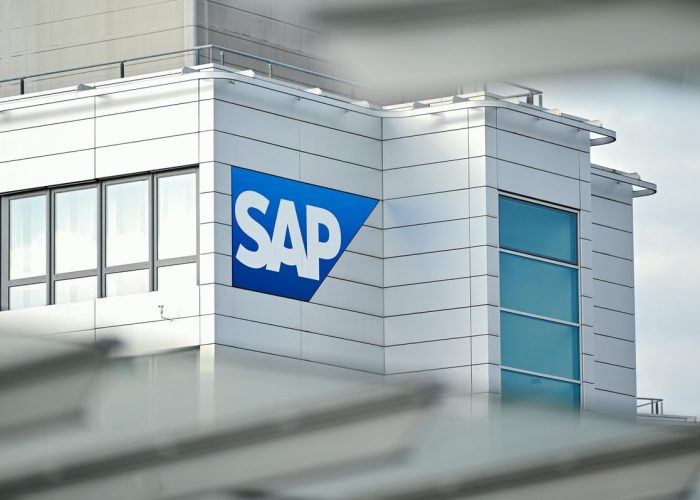17 January 2020, Baden-Wuerttemberg, Walldorf: A company logo of the software company SAP is … [read more] attached to a company building. On Tuesday (January 28), SAP will announce its financial figures for the past year. Photo: Uwe Anspach/dpa (Photo by Uwe Anspach/picture alliance via Getty Images)
dpa/picture alliance via Getty Images
We believe that SAPs stock (NYSE: SAP) has limited upside potential once fears surrounding the coronavirus outbreak subside given its current price of around $128. Our conclusion is based on a detailed comparison of SAPs performance against the S&P 500 now as well as during the 2008 downturn in our interactive dashboard analysis, 2007-08 vs. 2020 Crisis Comparison:How Did SAPs Stock Fare Compared With S&P 500?
The World Health Organization declared a global health emergency at the end of January in light of the coronavirus spread. The rally in the equity market continued till February 19, with the S&P 500 reaching a record high, but the trend reversed sharply over the following weeks. SAPs stock lost 31% of its value (vs. about 34% decline in the S&P 500) between February 19 and March 23. A bulk of the decline came after March 6, when an increasing number of coronavirus cases outside China fueled concerns of a global economic slowdown. Notably, though, the multi-billion dollar stimulus package announced by the U.S. government has helped the stock price recover 28% over recent weeks (vs. about 35% gain in the S&P 500) to its current level of $128.
SAPs Stock Fell Because The Situation On The Ground Has Changed
SAPs stock has suffered as states and countries are on lockdown. As industries have halted production and services, the demand for software and web services have also taken a hit with consumers focusing solely on essentials and not discretionary products. We believe SAPs Q2 results will confirm this reality with a drop in demand for products and services across its segments (Cloud, Software and Services), resulting in a drop in revenue growth. Our projections for SAPs Revenues in 2020 and 2021 are available in a separate interactive dashboard.
But SAPs Stock Fared Worse During The 2008 Downturn
We see SAPs stock declined from levels of around $51 in October 2007 (the pre-crisis peak) to below $28 in March 2009 (as the markets bottomed out) – implying that the stock lost as much as 46% of its value from its approximate pre-crisis peak. This marked a lower drop than the broader S&P, which fell by about 51%.
Moreover, SAP recovered strongly post the 2008 crisis to about $41 in early 2010 – rising by 48% between March 2009 and January 2010. In comparison, the S&P also bounced back by about 48% over the same period.
Will SAPs Stock Recover Similarly From The Current Crisis?
SAPs stock fell 31% from the market peak on February 19 to the low on March 23 compared to the 46% decline during the 2008 recession. We believe it can potentially recover to levels of $138-140 or more once economic conditions begin to show signs of improvement. This marks a full recovery to the $139 level SAPs stock was at before the coronavirus outbreak gained global momentum.
That said, the actual recovery and its timing hinge on the broader containment of the coronavirus spread. Our dashboard forecasting U.S. Covid-19 cases with cross-country comparisons analyzes expected recovery time-frames and possible spread of the virus.
Further, our dashboard -28% Coronavirus crash vs. 4 Historic crashes builds a complete macro picture and complements our analyses of the coronavirus outbreaks impact on a diverse set of SAPs multinational peers, including IBM and Salesforce. The complete set of coronavirus impact and timing analyses is available here.
SAPs stock is expected to return to pre-coronavirus levels, but is there an opportunity between Restaurant Brands and McDonalds.
See all Trefis Price Estimates and Download Trefis Data here
Whats behind Trefis? See How Its Powering New Collaboration and What-Ifs For CFOs and Finance Teams | Product, R&D, and Marketing Teams
SAP’s Stock To Regain Pre-Corona Level?


